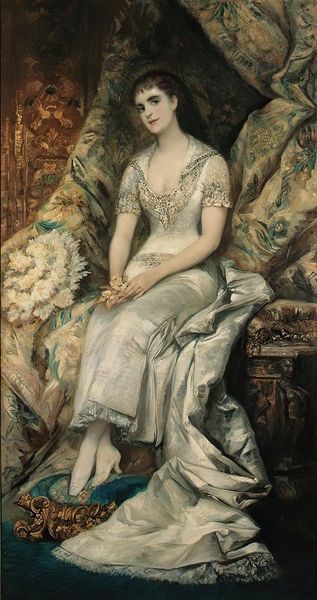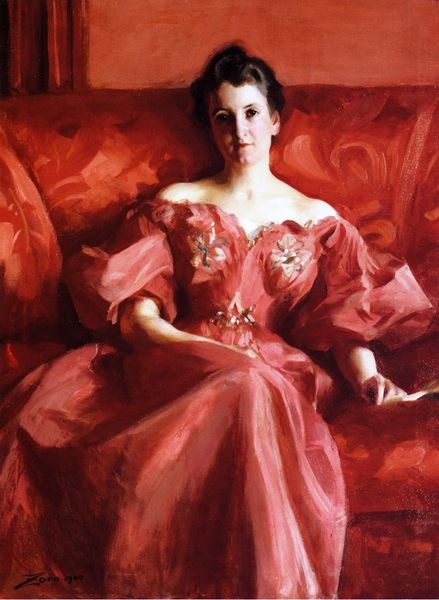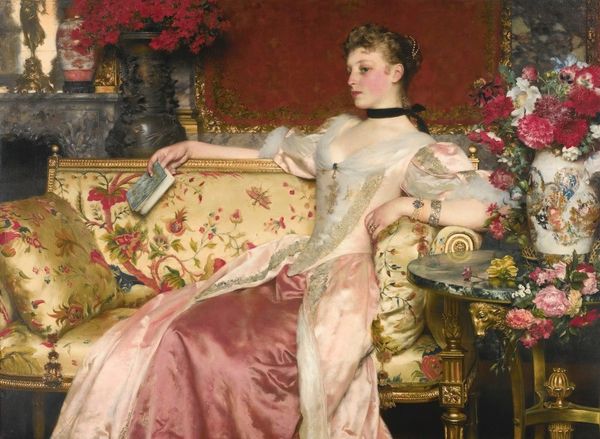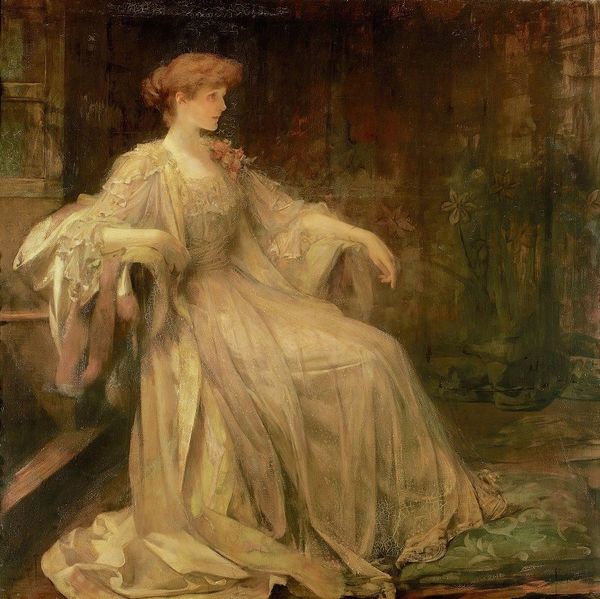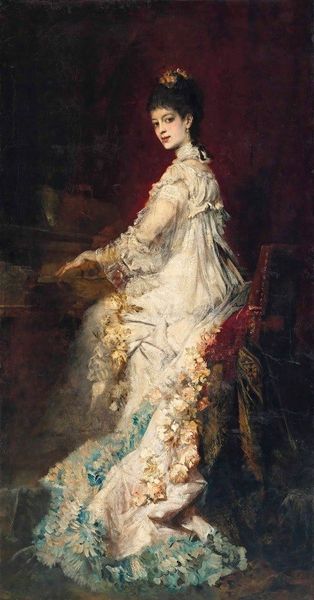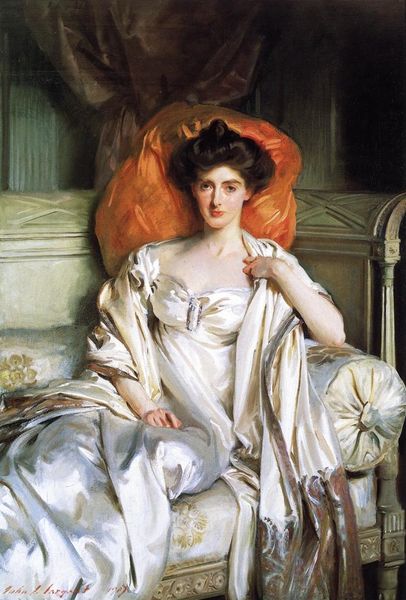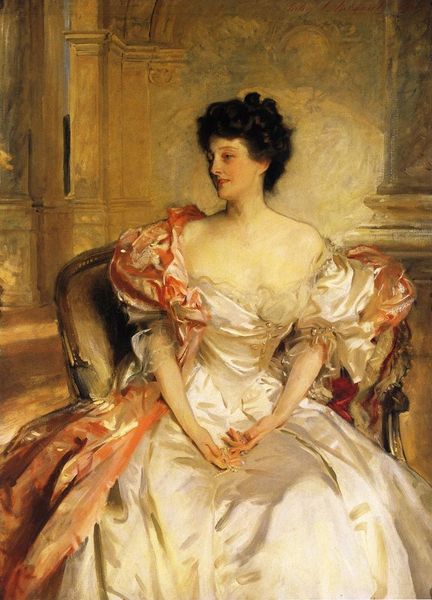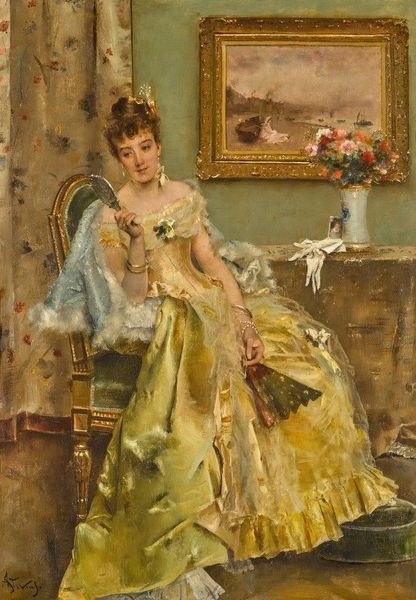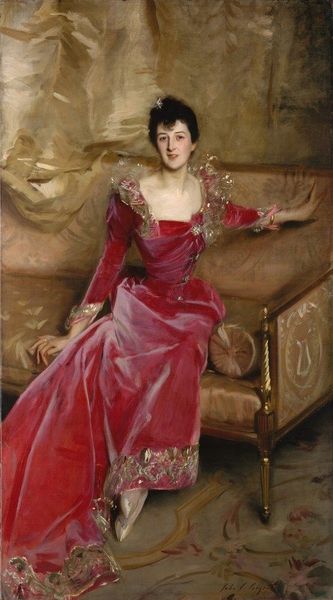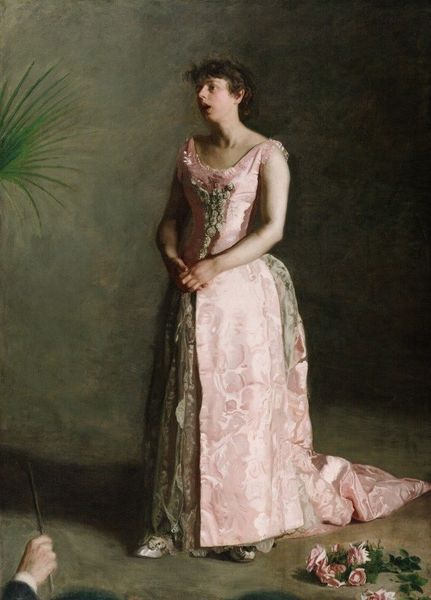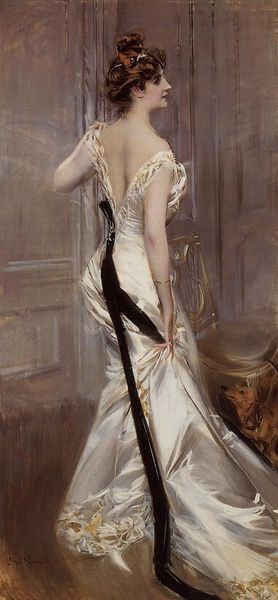
Copyright: Public domain
Curator: Today we're looking at Antonio de La Gándara's oil painting "Maria Hardouin D'Annunzio" created in 1899. Editor: It's quite striking, really. That soft pink dress against the dark, ornate background creates a compelling contrast. There’s a sort of dreamy, romantic aura about it. Curator: The portrait captures Maria Hardouin, who was not only an Italian noblewoman but also, importantly, the wife of the celebrated poet Gabriele D'Annunzio. The artist seems to position her as the beautiful wife of an even more prominent artistic man. We could suggest it serves as a symbol of status and affiliation. Editor: Absolutely, it's interesting to consider her status is indicated in a more formal context. But looking purely at the painting, the execution of light across the gown is masterful. The folds and gathers, each shimmering with a different tone. The brushwork is so delicate. Curator: The Romanticism style lends itself to this sense of idealized beauty, almost putting the woman in question in an unrealistic and overly positive representation. Think about the politics of representation: which narratives were being given artistic validity. This painting gives one example. Editor: And in a purely artistic sense, I find myself wondering: the dark background really makes the pink of her dress sing! How might this change, if Gándara had gone with say, a lighter wall color behind the sitter? Would it still feel so lush and dramatic? Curator: I see it as Gándara reinforcing specific notions of beauty and aristocracy that prevailed at the turn of the century. We should examine these narratives through the artwork. Editor: Indeed, the narratives are undeniable. And yet, I am taken with the simple aesthetic delight it provides, irrespective of these constructs. I notice the painting gives viewers much to consider about the relationship between artistry and historical record. Curator: Absolutely. Both aspects converge here in this canvas to provoke a critical view about art, women, and society at the turn of the century.
Comments
No comments
Be the first to comment and join the conversation on the ultimate creative platform.
